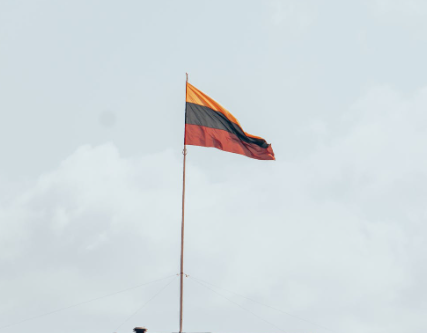Lithuanian Passport by Descent: A Complete Guide
Obtaining a Lithuanian passport by descent is an increasingly popular pathway for people with Lithuanian heritage. This process allows individuals whose parents, grandparents, or even great-grandparents were Lithuanian citizens to reclaim their ancestral nationality. Not only does it reconnect people with their cultural roots, but it also grants them the rights and privileges of European Union (EU) citizenship, including freedom of movement, work, and study across all EU countries.
This article will provide a comprehensive explanation of how to get a Lithuanian passport through descent, eligibility requirements, the application process, necessary documentation, and the benefits of holding Lithuanian citizenship.

Who Is Eligible for a Lithuanian Passport by Descent?
To obtain a Lithuanian passport descent, the most crucial step is determining eligibility. Lithuania’s citizenship laws are based on the principle of jus sanguinis (right of blood). This means citizenship is inherited through family lineage rather than place of birth.
Key Eligibility Criteria
Ancestral Connection
You may qualify if one of your parents, grandparents, or great-grandparents was a Lithuanian citizen before Lithuania lost independence in 1940 due to Soviet occupation.
Proof of Citizenship
Your ancestor must have been a documented Lithuanian citizen, not just a resident.
Loss of Citizenship
Many Lithuanians lost their citizenship involuntarily during periods of occupation (Soviet and Nazi). Descendants of such individuals are eligible to restore citizenship.
Dual Citizenship Rules
Lithuania allows dual citizenship only in limited cases. However, if your ancestors left Lithuania before 1990 and you are applying through descent, you may qualify to keep your current citizenship along with the Lithuanian one.
Required Documents
To apply for a Lithuanian passport by descent, applicants must gather strong documentary evidence proving their lineage and their ancestor’s Lithuanian citizenship. Typical documents include:
Birth Certificates (your own, your parents’, and grandparents’ if necessary).
Marriage Certificates to establish the family link across generations.
Lithuanian Passports or Identity Papers of ancestors.
Archival Records such as residency documents, military records, or property ownership documents from Lithuania.
Emigration Records showing how and when your ancestors left Lithuania.
The Application Process
Applying for Lithuanian citizenship by descent involves several steps. Below is a simplified breakdown:
Step 1: Research and Gather Documents
Begin by collecting family records, birth certificates, and any documentation showing Lithuanian citizenship of your ancestor.
Step 2: Contact Lithuanian Archives
If you do not have sufficient documents, the Lithuanian State Historical Archives can help locate official records that prove citizenship.
Step 3: Submit Application
Applications are usually submitted to the **Migration Department of Lithuania** or at a Lithuanian consulate in your country of residence.
Step 4: Review Period
Processing may take several months to over a year, depending on the complexity of your case.
Step 5: Citizenship Granted and Passport Issued
Once your Lithuanian citizenship is confirmed, you can apply for a Lithuanian passport.
Benefits of a Lithuanian Passport
Holding a Lithuanian passport comes with numerous advantages, particularly because Lithuania is a member of the European Union.
EU Citizenship Rights
– Freedom to live, work, or study in any EU country. – Access to healthcare and education within the EU. – Visa-free travel to more than 180 countries worldwide.
Cultural and Personal Benefits
– Reconnection with Lithuanian heritage and traditions. – Opportunities to strengthen ties with extended family in Lithuania.
Common Challenges and Solutions
While the process seems straightforward, applicants may face difficulties, especially in proving descent.
Missing Documents: Many families lost documents during wars and migration. In such cases, official archives can often provide substitutes.
Complex Family Trees: Sometimes proving lineage through several generations requires multiple translations and certifications.
Dual Citizenship Confusion: Since Lithuania restricts dual citizenship, applicants should consult legal professionals to determine if they can hold both nationalities.
Why Many People Are Applying Today
In recent years, there has been a surge in applications for Lithuanian citizenship by descent. This is driven by several factors:
Desire to reconnect with ancestral roots.
Access to EU opportunities for career and education.
Geopolitical changes prompting people to seek additional citizenship security.
For example, many descendants of Lithuanian immigrants in the United States, Canada, South Africa, Argentina, and Australia are now applying for Lithuanian citizenship.
Conclusion
Applying for a Lithuanian passport by descent is not only a legal process but also a meaningful journey of rediscovering family history and cultural identity. It opens the door to both personal and professional opportunities, thanks to the rights attached to EU citizenship.
If you can prove that your parents, grandparents, or even great-grandparents were Lithuanian citizens before 1940, you may have a strong claim. While the process requires patience, documentation, and often professional guidance, the benefits of holding a Lithuanian passport are considerable.
In summary, the Lithuanian passport descent process is a unique bridge between the past and the present, enabling people worldwide to reclaim their Lithuanian heritage while unlocking the privileges of EU citizenship.